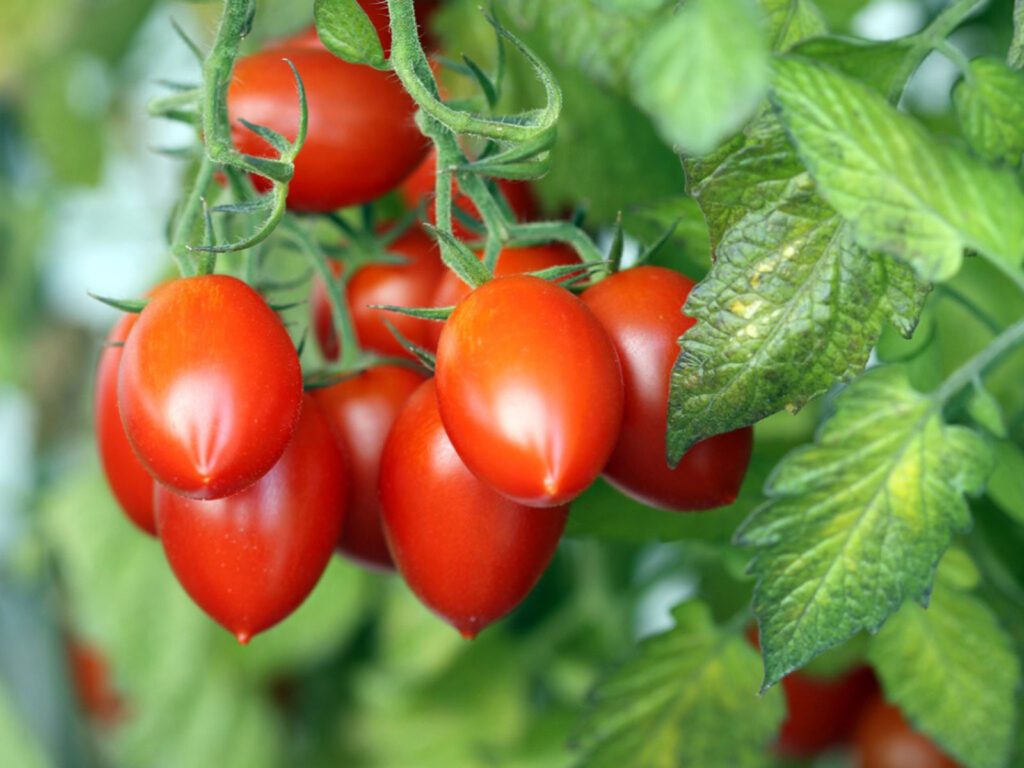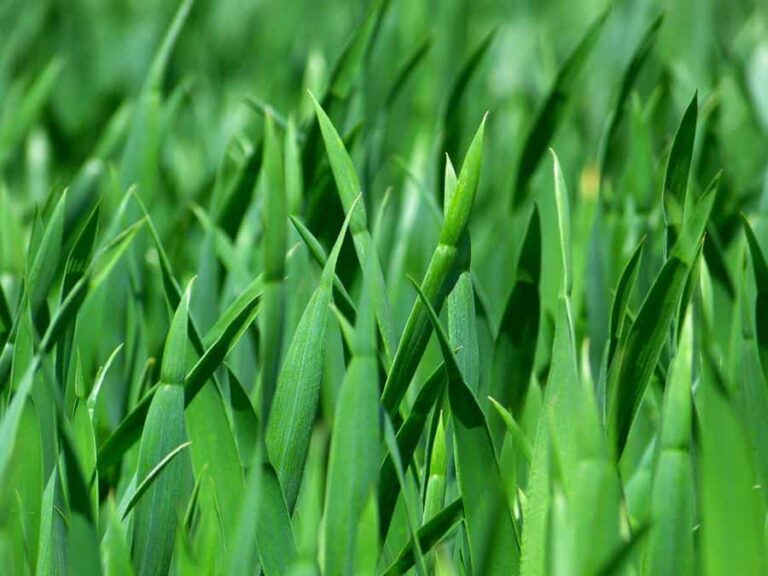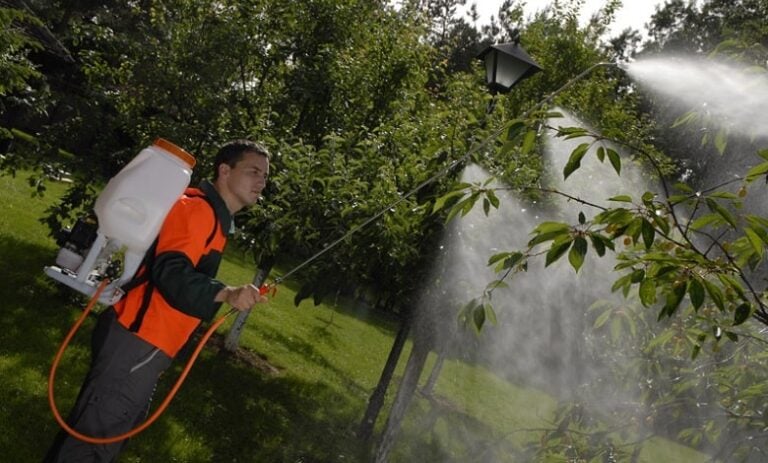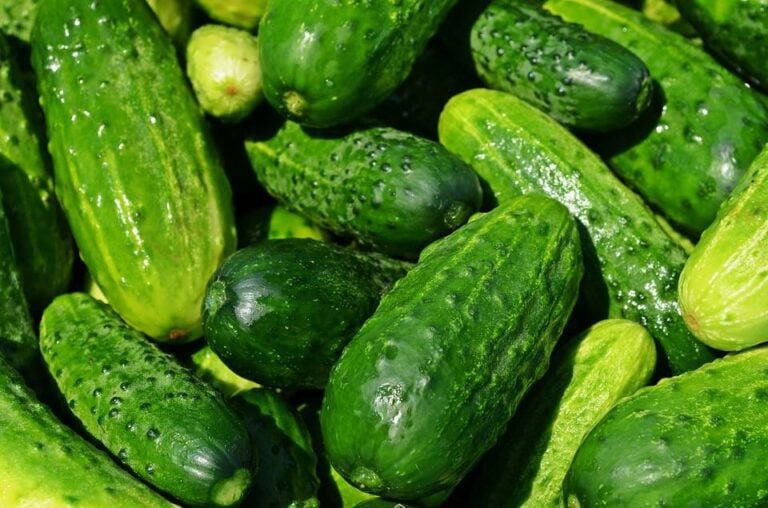How Far Apart to Plant Tomatoes
You will be rewarded with wholesome, disease-free, and delectable tomatoes from properly spaced tomato plants. Do not undervalue the significance of correctly spacing and planting your tomatoes, even if you have a tiny garden. It might be challenging to pinpoint the formula for tomato spacing because there are many variables, including the type of tomato you’re planting and the supports you employ.
You might be tempted to plant many tomatoes near one another, especially if growing in a constrained area like a container or raised bed. However, this might be a prescription for garden catastrophe. Tomatoes planted too tightly together can result in a variety of problems, including illness and decreased growth. Fortunately, placing plants appropriately in space is simple.

Some Interesting Facts About Tomatoes
For optimum growth, tomatoes must be planted in the garden when the soil and surrounding atmosphere have reached 60 degrees F (16 degrees C). The distance between tomato plants can impact the plants’ growth in addition to the temperature.
The tomato is not only the most widely cultivated crop in backyard gardens but is also arguably the food with the most applications, including stew, roasting, pureeing, fresh, drying, and even smoking. Lycopene, identified as a potential cancer preventative, is found in tomatoes, which are also high in vitamins A and C and low in calories.
The common tomato color is red, but other colors include orange, yellow, dark burgundy, purple, black, vibrant green, and even white. Many of these hues can be found in fruit like beefsteak, plum, or cherry, as well as determinate or indeterminate plants. If color is your main deciding factor, start by looking for it before focusing on the other elements.
Although flavor would seem to be the most important factor, aficionados have only recently begun discussing the subtleties of tomato flavor. While some tomatoes are deep and showcase that mysterious fifth flavor, umami, others are sharp and acidic. You’ll be astounded by the variety of flavours tomatoes may offer, much beyond the local supermarket kinds, which are designed more for consistent size, shape, and easy handling, than flavor, as you start to produce your own and test out other varieties.
How To Space Tomatoes
Tomato plants should generally be spaced 18 to 24 inches apart, although plant spacing varies a lot on the tomato variety you’re growing. Follow the spacing instructions on the seed packet or plant tag, or research the variety.
Tomato plants of the indeterminate variety are vining plants that keep growing until they are clipped or until a frost kills them. These plants can be planted as close as 18 inches apart but may benefit from the extra room since they generally grow more up than out, at least in comparison to determinates.
Indeterminate tomato types can grow up to eight feet tall, as opposed to determinate tomato plants, which only reach a set height before stopping. They only cease expanding once the final frost kills the plants for the year. They are also known as “vining tomatoes” and do best when planted on strong supports like trellises, stakes, or tall wire cages because they produce their crop over an extended period of time.
Plant determinate tomato varieties are 18 to 24 inches apart because they are bush-type plants that only grow to a specific height before stopping. As a result of selective breeding, some determinate tomato types can be grown closer together; cultivars designated as compact or dwarf can be spaced as little as 12 inches apart.
Although some larger types can reach heights of four feet, determinate tomato plants create compact plants that reach a height of approximately three feet. They are also known as “bush tomatoes.” Determinate tomato varieties are popular among gardeners who enjoy canning or preserving their harvest since their fruits ripen at around the same time. Although determined tomatoes are frequently left standing alone, they can also be kept upright with the use of robust tomato cages.
The determinate or indeterminate nature of the tomatoes being produced as well as the types of supports being utilized, will determine how far apart they should be planted. Compared to plants permitted to sprawl on the ground, trellised plants on solid cages or supports can withstand a closer planting. In addition, trellising your tomato plants has additional advantages. They won’t be as susceptible to illnesses brought on by the soil.
Despite the fact that these are the two primary growth patterns, innovative breeding has expanded the potential of plant form and structure to either new heights or, in the case of the tomato, new lows. In order to meet the needs of gardeners with limited area and those who grow in pots, new types keep getting smaller and smaller.
Compact plants have short, densely-foliated branches that remain very small and are determinate. Though not all compact types produce fruit, many do. They thrive in containers, don’t require staking, and go by the name “patio tomatoes.”
Tumblers are excellent for containers, much like compact varieties, but they also have the attractive visual advantage of a trailing habit, allowing you to utilize them to flow over the sides of pots and hanging baskets.
Tomatoes Planted In The Ground
You could have more room and plant in rows if you are planting straight in the ground. In that scenario, leave a row of tomatoes 18 to 24 inches apart, but leave a row of tomatoes approximately 36 inches apart. You will have ample space to operate in between rows as a result. Follow the 18–24 inches recommendation if you’re planting more densely in the ground rather than in rows, but take into account how you’ll get to the plants without trampling them.
Tomatoes Planted In Raised Beds
The 18-24 guide’s intense planting instructions are identical to those for planting in the ground. Your raised bed’s depth will also be important. In deeper soil (12 inches or more), you might be lucky to escape with slightly closer spacing because there are more nutrients available for your tomato plant and more room for the roots.
Tomatoes Planted In Containers
Tomato plants should be cultivated one per container in big containers at least 18 or 24 inches wide and deep, with the exception of the very compact container tomato plants that can be grown in containers as tiny as 12 inches wide and deep. Although it may be tempting to grow multiple tomato plants in a single container, each tomato plant needs its own room to grow. Other low-growing plants that won’t be competing with your tomatoes, such as lettuce or marigolds, can be used as a supplement.
Importance Of Spacing
The spacing between your plants affects their general health, the quantity of light they receive, and your access to your plants. Too many tomato plants together increase the risk of pests and diseases that are easily transmitted from plant to plant. That’s because the soil and bottom leaves’ protection from the sun promotes damp environments, which are ideal for pests and diseases to flourish.
In addition, airflow is an often discussed preventative measure for dealing with diseases and pests. Correct tomato spacing enhances airflow within and between plants, lowering the likelihood of infection or infestation.
On wet leaves, several plant diseases thrive. Tomato plants are more likely to contract deadly diseases if they are planted too closely together, preventing air and sunlight from drying off the leaves.
In your garden, plants fight with one another for resources like water, soil nutrients, and sunlight. Because tomato plants need a lot of these nutrients, they will compete and probably all lose if they are planted closely together.
Even if tomato plants that are too near to one another survive, they might not yield as many tomatoes as they would have if they were given enough room to grow.
Close tomatoes may compete with one another for soil resources. Tomato plants that are undernourished are weaker and more prone to pests and illnesses. Lack of growth reduces yields because weak stems can no longer support the fruits.
Furthermore, properly spaced tomatoes allow light to penetrate not just the tops but all of the leaves as well. As all gardeners are aware, photosynthesis depends on sunshine, and the more photosynthesis is promoted, the better the plant growth. Additionally, it improves the overall fruit yield and plant health.
Too many plants together make it harder to manage, check, and harvest the plants. You may inspect your tomato plants for diseases and pests, treat them, prune them, and harvest them without worrying that you’ll harm them.
You should also think about allowing space to allow for future additions of beneficial companion plants if you intend to place them between or around the tomato plants. Marigolds are a great companion plant that won’t take up much space, but you’ll need to leave enough space between them so that light can reach the lower marigolds.
Maintenance
Don’t forget to prune after you’ve properly spaced your tomatoes. While staked indeterminate tomatoes require constant pinching to eliminate suckers, determinate tomatoes do not require pruning. This encourages the growth of strong, fruitful plants. Pruning tomato plants is simple, but it needs to be done every 7 to 10 days.
Suckers are vegetal shoots that grow between the main stem and a branch in the crotch. While leaving suckers may result in more tomatoes, the average fruit size will be smaller. Suckers do produce blossoms and fruits. In essence, the plants suffer from a lack of airflow and turn into a tangle of foliage.
The suckers are simple to detach with your fingers when they are 2 to 3 inches long. You could use a pair of pruners to carefully remove suckers if you let them become bigger.
When they are ripening, provide your tomatoes with a consistent supply of moisture: 1 to 2 inches of water every week. It could be necessary to water tomatoes in containers every day or two. Blossom end rot is one issue that might result from inconsistent irrigation. Generally, the best recommendation is to water less frequently yet deeply.
Hybrid Seeds
Cross-pollination between two parent varieties has been used in hybrid breeding to produce a new variety with favorable traits, including resistance to disease or plant height. You cannot keep the seed from a hybrid and hope to acquire the same combination of features in the following generation; the seed must constantly be created by cross-pollination, a kind of human meddling, in an effort to keep those desired qualities.
Heirloom Seeds
Over the course of at least 50 years, heirlooms have been passed down while largely maintaining their original qualities. They frequently have intriguing origins, colors, and flavors in addition to being suited to particular locales, yet occasionally only have a limited level of disease and insect resistance.
In addition, heirlooms are open-pollinated, or OP, which refers to pollination that happens naturally in the field as opposed to being managed by humans, like cross-pollination. Because a variety may be open-pollinated yet not have the heirloom’s historical ancestry, some seeds will be marked as OP but not heritage.
Effects Of Climate
Although tomatoes may grow practically anywhere, not all tomato types do so successfully.
Finding types that develop and yield fast and can withstand chilly temperatures is crucial for gardeners in chilly, short-season zones, like zones five and above. You can look at the “days to maturity” statistics or look up terms like early, short-season, or cool-climate cultivars to further identify these. Consider tomato types on the faster end of the spectrum if your growing season is limited. Tomatoes mature in a range of about 60 to 100 days.
Since most tomato illnesses thrive in moist environments, cultivars with disease resistance are probably your best bet if you reside in a very humid climate. If you live in a hot, dry area, seek cultivars that are praised for their heat tolerance; in several instances, the name—for example, Heat Master and Solar Fire—will be a clue.
Many heirloom cultivars are well-liked and known to thrive in specific areas of the country. If you’re keen on heirlooms, seek seed offered by smaller, local seed businesses that focus on local selections.





